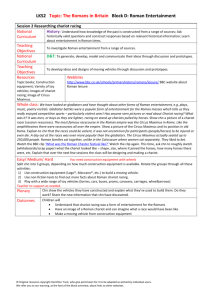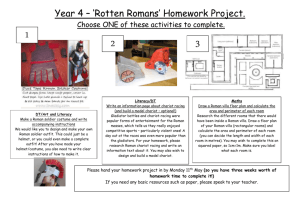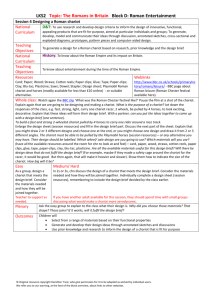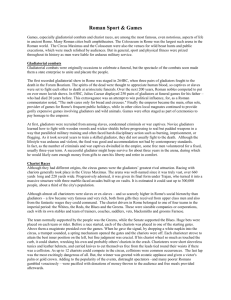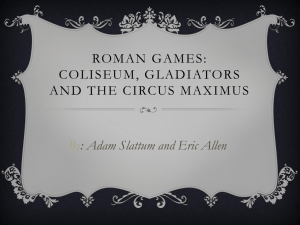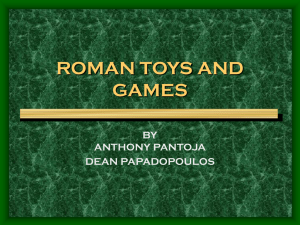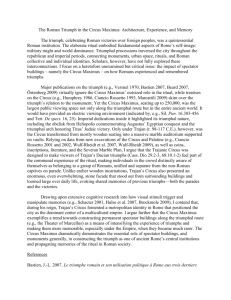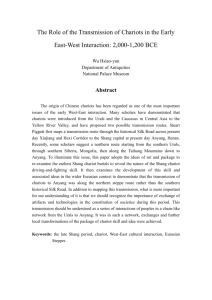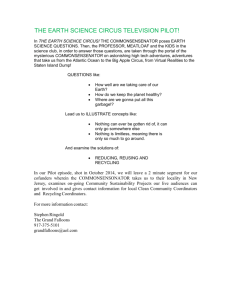Session 05
advertisement
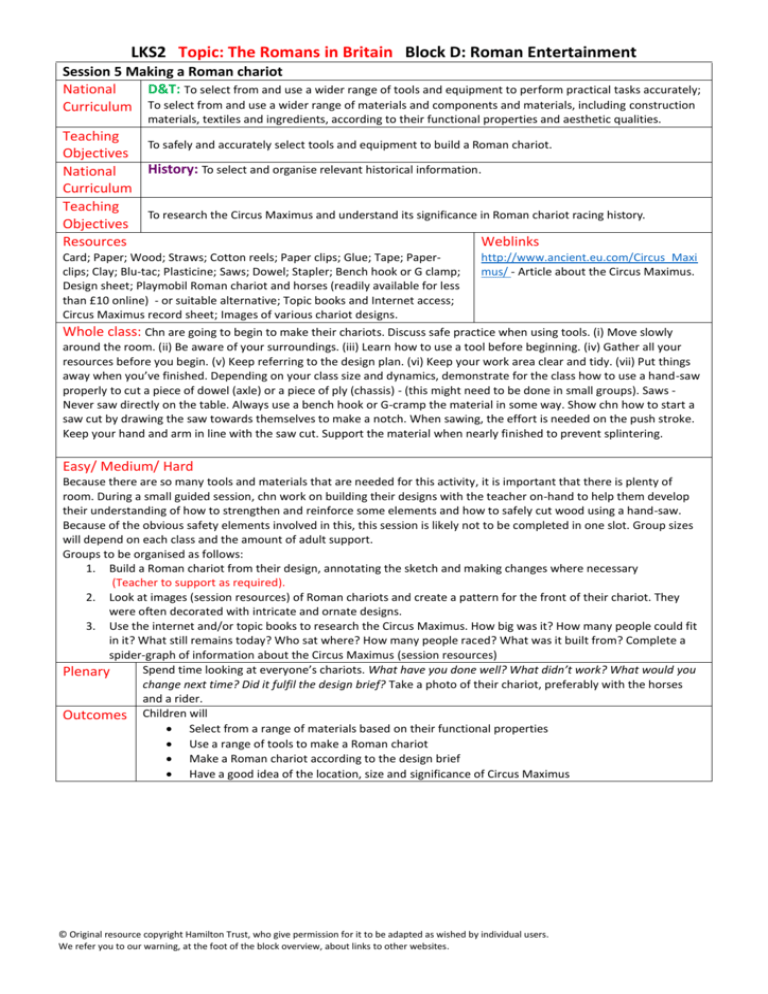
LKS2 Topic: The Romans in Britain Block D: Roman Entertainment Session 5 Making a Roman chariot National D&T: To select from and use a wider range of tools and equipment to perform practical tasks accurately; Curriculum To select from and use a wider range of materials and components and materials, including construction materials, textiles and ingredients, according to their functional properties and aesthetic qualities. Teaching Objectives National Curriculum Teaching Objectives Resources To safely and accurately select tools and equipment to build a Roman chariot. History: To select and organise relevant historical information. To research the Circus Maximus and understand its significance in Roman chariot racing history. Weblinks Card; Paper; Wood; Straws; Cotton reels; Paper clips; Glue; Tape; Paperhttp://www.ancient.eu.com/Circus_Maxi clips; Clay; Blu-tac; Plasticine; Saws; Dowel; Stapler; Bench hook or G clamp; mus/ - Article about the Circus Maximus. Design sheet; Playmobil Roman chariot and horses (readily available for less than £10 online) - or suitable alternative; Topic books and Internet access; Circus Maximus record sheet; Images of various chariot designs. Whole class: Chn are going to begin to make their chariots. Discuss safe practice when using tools. (i) Move slowly around the room. (ii) Be aware of your surroundings. (iii) Learn how to use a tool before beginning. (iv) Gather all your resources before you begin. (v) Keep referring to the design plan. (vi) Keep your work area clear and tidy. (vii) Put things away when you’ve finished. Depending on your class size and dynamics, demonstrate for the class how to use a hand-saw properly to cut a piece of dowel (axle) or a piece of ply (chassis) - (this might need to be done in small groups). Saws Never saw directly on the table. Always use a bench hook or G-cramp the material in some way. Show chn how to start a saw cut by drawing the saw towards themselves to make a notch. When sawing, the effort is needed on the push stroke. Keep your hand and arm in line with the saw cut. Support the material when nearly finished to prevent splintering. Easy/ Medium/ Hard Because there are so many tools and materials that are needed for this activity, it is important that there is plenty of room. During a small guided session, chn work on building their designs with the teacher on-hand to help them develop their understanding of how to strengthen and reinforce some elements and how to safely cut wood using a hand-saw. Because of the obvious safety elements involved in this, this session is likely not to be completed in one slot. Group sizes will depend on each class and the amount of adult support. Groups to be organised as follows: 1. Build a Roman chariot from their design, annotating the sketch and making changes where necessary (Teacher to support as required). 2. Look at images (session resources) of Roman chariots and create a pattern for the front of their chariot. They were often decorated with intricate and ornate designs. 3. Use the internet and/or topic books to research the Circus Maximus. How big was it? How many people could fit in it? What still remains today? Who sat where? How many people raced? What was it built from? Complete a spider-graph of information about the Circus Maximus (session resources) Spend time looking at everyone’s chariots. What have you done well? What didn’t work? What would you Plenary change next time? Did it fulfil the design brief? Take a photo of their chariot, preferably with the horses and a rider. Outcomes Children will Select from a range of materials based on their functional properties Use a range of tools to make a Roman chariot Make a Roman chariot according to the design brief Have a good idea of the location, size and significance of Circus Maximus © Original resource copyright Hamilton Trust, who give permission for it to be adapted as wished by individual users. We refer you to our warning, at the foot of the block overview, about links to other websites.
